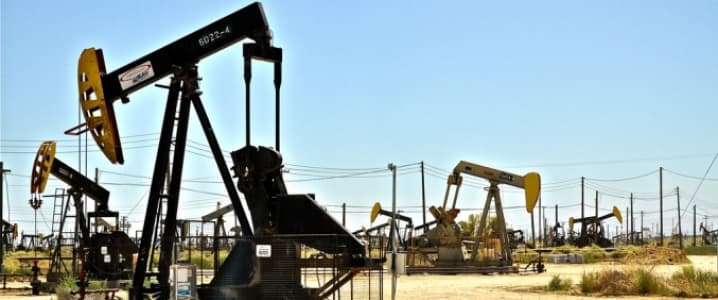The recent recovery of oil prices couldn’t have come at a better time for the world’s top oil majors that have ridden the rough oil price crash with huge investment cuts and layoffs. Although Big Oil continues to cut capital and exploration expenditure, it is poised to see this year the biggest production gains since 2010. The reason: investments in projects made early this decade, before the oil price slump, are now expected to start yielding results.
What’s more, higher production this year would come for a Big Oil that has dramatically lowered costs. In addition, with oil prices above US$50, oil majors are set to capitalize more on increased production.
ExxonMobil, Chevron, Royal Dutch Shell, BP, Total, Eni, and Statoil are expected to increase their combined oil and gas production by 398,000 bpd this year, the highest increase since 2010, according to figures by Norway-based consultancy Rystad Energy AS. Combined production at the seven biggest companies is seen rising by around 670,000 bpd next year.
Much of the output increase is expected to come from large-scale offshore oil and gas projects approved at the beginning of this decade and very difficult to shut down once online, Espen Erlingsen, vice-president for analysis at Rystad, told Bloomberg.
So Big Oil is now reaping the results of investments made when budgets were lavish and spending was booming at oil prices above US$100.
“Heavy investments of previous years are paying off with more production, costs have been cut and the companies are in a position to take advantage of that when oil prices rise,” Mark Tabrett, a London-based analyst at Bernstein, told Bloomberg.
The biggest energy firms would thus see their production increase while investments continue to fall. The majors’ combined development investment is expected to drop by some 8 percent this year as spend in recent capital-intensive projects winds down, Wood Mackenzie said in a recent analysis on the upstream sector. Related: U.S. Oil Rig Count Falls For The First Time In 12 Weeks
Big Oil continues to reduce capital and exploration expenditure, latest earnings reports show. Exxon, for example, said that its capital and exploration expenditure dropped by 39 percent annually to US$14.5 billion for the first nine months of 2016. Chevron said last month that it would spend US$19.8 billion in 2017, down by 42 percent on 2015 and at least 15 percent lower than outlays for 2016. Shell’s 2016 organic capital investment was US$29 billion, around US$18 billion lower than 2014 levels. Capital investment for 2017 is expected at around US$25 billion, the low end of the US$25 billion-$30 billion range. BP expected last year’s capex at US$16 billion, down from original guidance of US$17 billion-19 billion.
Massive costs cuts and increased efficiencies are also helping the majors get more work done for their investment. Statoil said last week that it was planning on increasing exploration drilling activity this year as it has been able “to get more wells, more acreage and more seismic data for our exploration investments in later years”.
Of course, Big Oil’s investment and drilling plans are contingent on the recovery of oil prices and hopes that OPEC’s deal has put a sustainable floor on crude oil prices.
According to Bernstein analysts, if oil prices stay over US$50 per barrel (which is basically the current forecasts of most analysts and organizations), this year could be a “break-out year” and Big Oil may not even have to resort to new borrowings in order to fund the precious sacred dividend payments. Related: Saudis Cut Even More: Oil Production Falls To 2 Year Low
As good as past investment is for production gains now, the capex slashed during the downturn could mean that Big Oil’s production might start dropping in just a few years.
Rob West, an analyst at London-based equity broker Redburn (Europe) Ltd, sees production eventually declining for those majors that had slowed down sanctioning of new projects.
“Field-by-field models suggest that’s a problem for 2020,” West told Bloomberg.
So Big Oil’s biggest hope would be higher oil prices that would raise cash flows and allow for more spend on cost-efficient projects.
By Tsvetana Paraskova for Oilprice.com
More Top Reads From Oilprice.com:
- EIA: Brent Prices To Average $53 In 2017
- Four Factors Fueling Canada’s Oil Recovery
- China's Oil Import Dependency Deepens


















